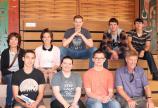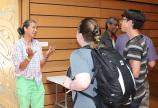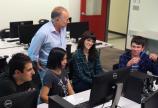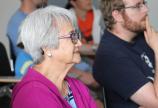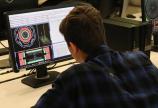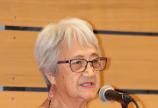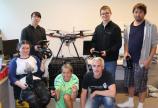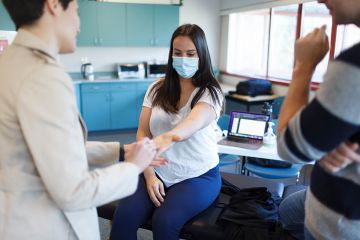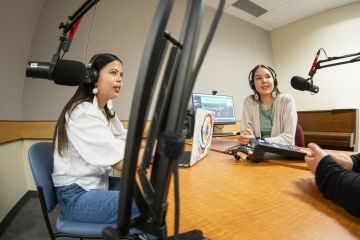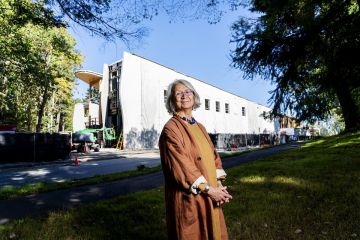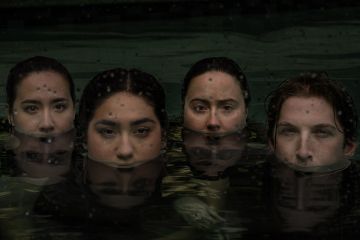Indigenous high school students experience STEM research at UVic
- Barbara Todd Hager

Lysozymes. Particle physics. Virtual reality. Drone technology. Black holes. These are a few of the science and technology topics that 10 Indigenous high school students delved into during a week-long STEM residency at the University of Victoria from May 27-31. The grade 11 students—nine from BC and one from Saskatchewan—were mentored by UVic professors and grad students over five eventful days on campus.
This is the first time that UVic has partnered with the Verna J. Kirkness Foundation to deliver their Science and Engineering Education Program to First Nations, Inuit and Métis youth. On the first day, the students were split up into four teams and matched with mentors Yvonne Coady, George Tzanetakis and Jens H. Weber from the Department of Computer Science; Karun Thanjavur and J. Michael Roney from the Department of Physics and Astronomy; and Steve Evans from biochemistry.
The students sat in on first- and second-year science and computer classes, conducted research in labs and toured various university STEM departments. Midway through the week, the program’s namesake, Verna Kirkness, arrived in Victoria to meet the students and take part in an honouring celebration at First Peoples House. On Friday, each team presented an overview of the research they did with their faculty and grad student mentors.
Kirkness is an internationally renowned Indigenous educator from the Fisher River Cree Nation in Manitoba. As a young teacher, she taught in residential schools, was one of the lead authors of the 1972 landmark report “Indian Control of Indian Education,” and was a program supervisor in the early years of UBC’s Native Indian Teacher Education Program. Kirkness spearheaded fundraising efforts to build the First Nations Longhouse at UBC, one of the first gathering places for Indigenous students at a major university in Canada, which earned her the nickname “Lady of the Longhouse.”
After more than 60 years as a fearless leader in Indigenous post-secondary education, her role as the honorary chair of the Verna J. Kirkness Foundation is one that she is very proud of. “We need good role models,” she says, “especially in STEM fields.” Kirkness points out that many schools in small towns and First Nations communities do not have science labs, and when students have a chance to do research in a university lab, it is a “fascinating experience” for them.
Throughout the week the youth, who are mainly from smaller communities such as Cowichan Bay, Tachet and Hazelton, had the chance to hold scientific research equipment at the Hyperspectral Lidar Research Group lab, look at lysozyme crystals in the physics lab, and view the night sky through UVic’s 0.8-metre telescope at the Bob Wright Centre.
On the final day of the program, each student team gave a presentation on what they had researched during their residency at UVic. Staff, faculty, grad students and family members in the audience were clearly impressed by the academic sophistication of their presentations.
“These are grade 11 students grasping concepts that second- and third-year university students are studying,” Kirkness said with pride after the presentations. “I think these youth are teaching their mentors as much as the professors and grad students are teaching them.”
With more than 500 participants over the past 11 years, the Verna J. Kirkness Science and Technology Education Program has become one of Canada’s leading influencers of Indigenous students considering STEM post-secondary education. There’s a high probability that one or more of these high achieving Indigenous students will be on the freshmen list at UVic in 2020/21.
Photos
In this story
Keywords: Indigenous, youth, philanthropy, community
People: Verna Kirkness, Yvonne Coady, George Tzanetakis, Jens H. Weber, Karun Thanjavur, J. Michael Roney, Steve Evans

